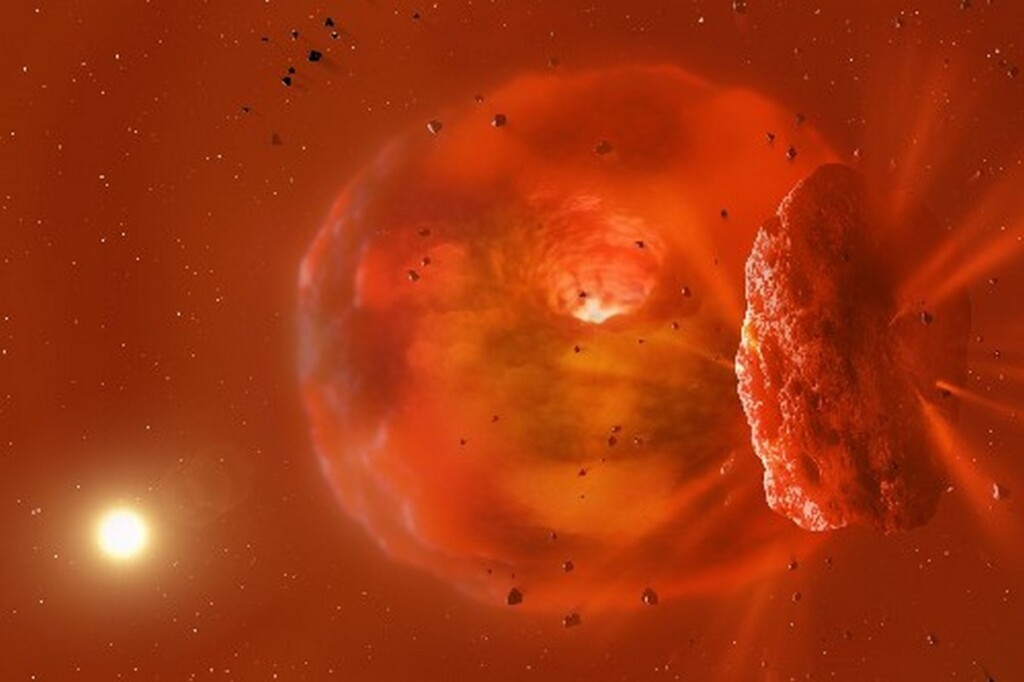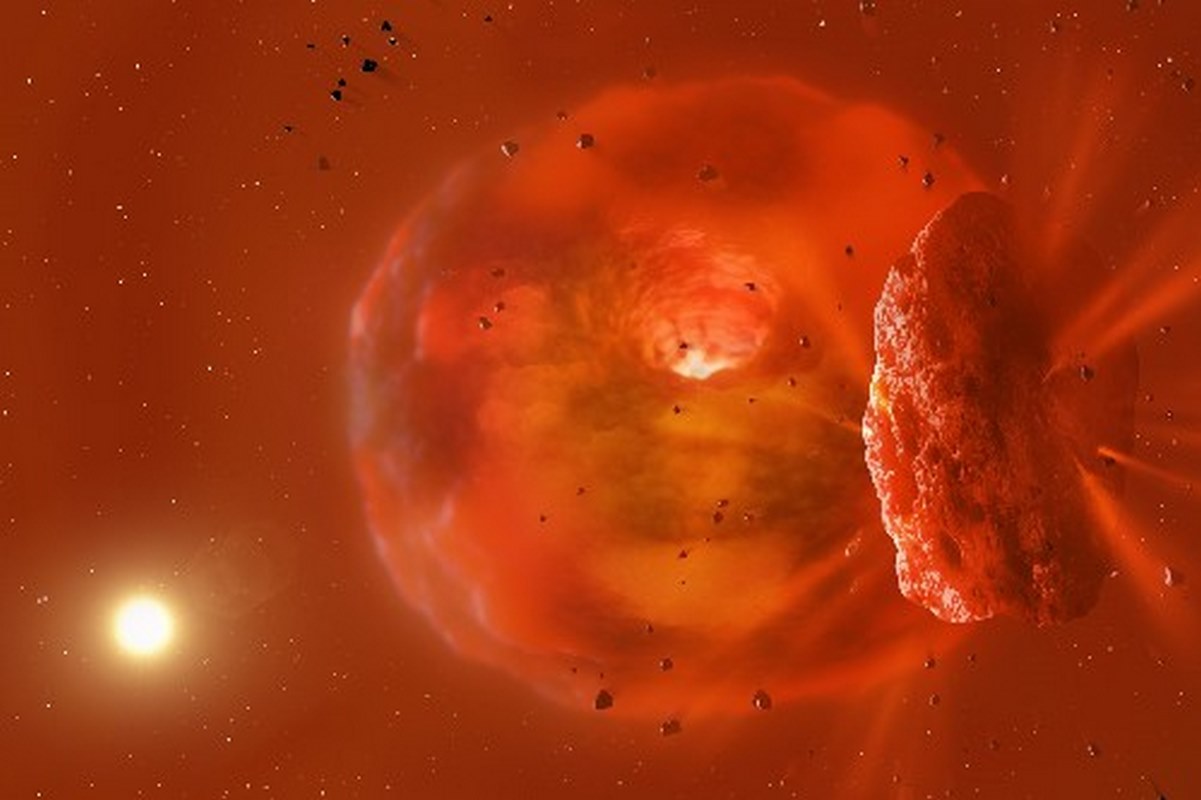
A chance social media post by an eagle-eyed amateur astronomer sparked the discovery of an explosive collision between two giant planets, which crashed into each other in a distant space system 1,800 light years away from planet Earth.
The confidence he had in what he saw led to an international team of astronomers being formed to investigate his claims that the light curve of an observed star showed the system doubling in brightness at infrared wavelengths some three years before the star started to fade in visible light.
The study, published in Nature by the team on the amateur’s tip-off, reports the sighting of two ice giant exoplanets several tens of Earth masses in size colliding around a sun-like star, creating a blaze of light and plumes of dust.
Its findings show the bright heat afterglow and resulting dust cloud, which moved in front of the parent star dimming it over time.
“To be honest, this observation was a complete surprise to me,” said co-lead author Dr. Matthew Kenworthy from Leiden University. “When we originally shared the visible light curve of this star with other astronomers, we started watching it with a network of other telescopes.”
“An astronomer on social media pointed out that the star brightened up in the infrared over a thousand days before the optical fading. I knew then this was an unusual event.”
Bristol University which first covered the story released no information about who the amateur was, what training he had, or if he was associated with an institution.
The network of professional and amateur astronomers studied the star intensively including monitoring changes in the star’s brightness over the next two years. The star was named ASASSN-21qj after the network of telescopes that first detected the fading of the star at visible wavelengths.
The researchers concluded the most likely explanation is that two ice giant exoplanets collided, producing the infrared glow detected by NASA’s NEOWISE mission, which uses a space telescope to hunt for asteroids and comets.
“Our calculations and computer models indicate the temperature and size of the glowing material, as well as the amount of time the glow has lasted, is consistent with the collision of two ice giant exoplanets,” said co-lead author Dr. Simon Lock, Research Fellow in Earth Sciences at the University of Bristol.
MORE EXOPLANET STORIES: NASA Just Found an Ocean World with Atmosphere–The Best Place to Look for Life in Our Galaxy
The resultant expanding debris cloud from the impact then traveled in front of the star some three years later, causing the star to dim in brightness at visible wavelengths.
Over the next few years, the cloud of dust is expected to start smearing out along the orbit of the collision remnant, and a tell-tale scattering of light from this cloud could be detected with both ground-based telescopes and NASA’s largest telescope in space, known as JWST.
YOU MAY ALSO LIKE: The First Amateur Astronomer to Ever Discover a New Moon – And it’s Orbiting Jupiter
The astronomers plan on watching closely what happens next in this system.
“It will be fascinating to observe further developments,” said co-author Dr. Zoe Leinhardt, Associate Professor of Astrophysics at the University of Bristol. “Ultimately, the mass of material around the remnant may condense to form a retinue of moons that will orbit around this new planet.”
SMASH This Story Made On Social Media With Your Friends Out In The Social Universe…




















